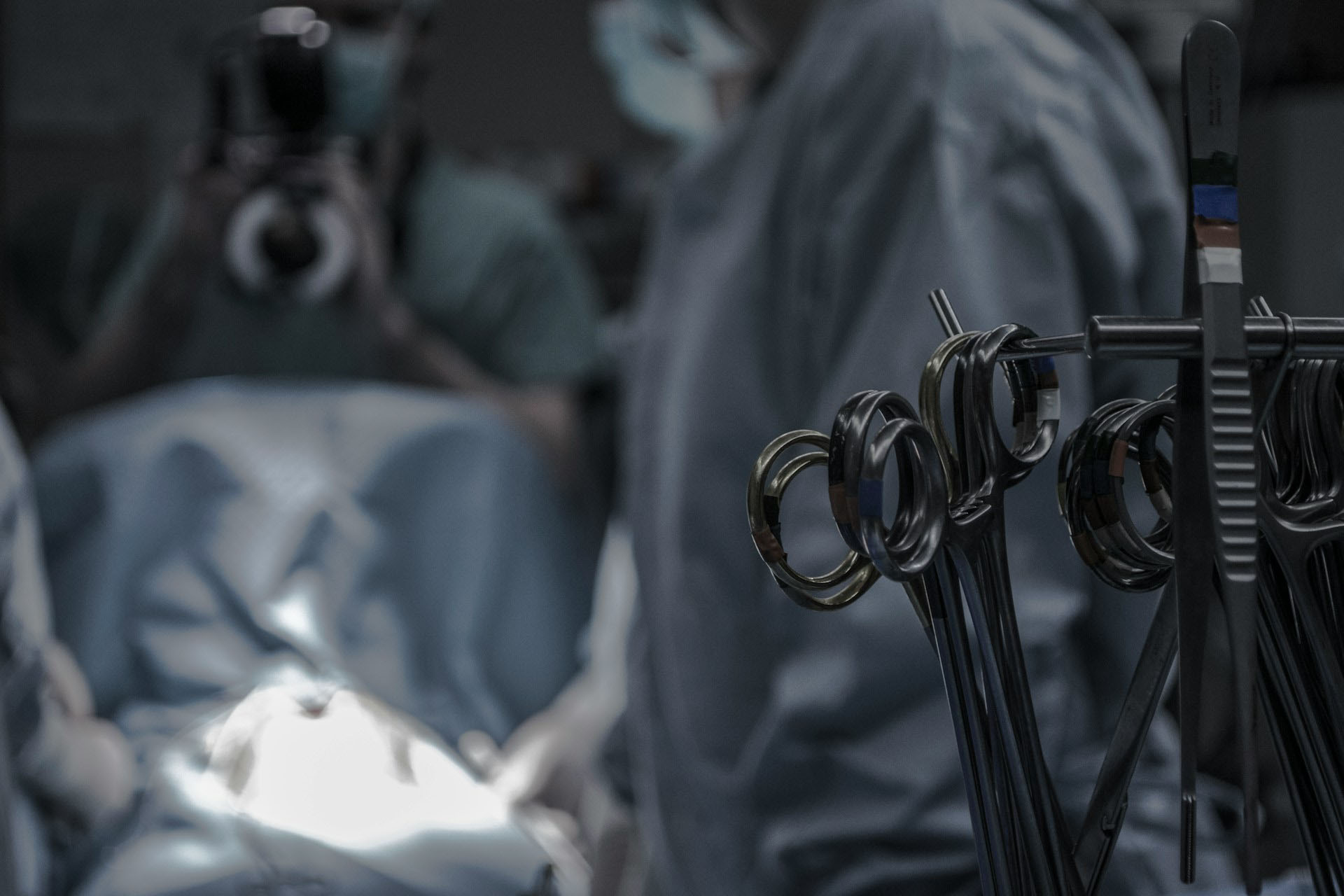Delivering world class medical care
FOR ADVANCED OVARIAN AND ENDOMETRIAL CANCER
Cytoreductive surgery is the surgical procedure that entails the removal of all visible tumour or cancer deposits in the abdomen. Usually the uterus and both ovaries are removed along with segments of peritoneum (the lining of the abdominal cavity and organs), the omentum (fatty tissue that hangs over the bowels), involved lymph nodes (glands) and occasionally segments of bowel should it also have visible disease. The motivation for this very drastic surgery is that it is well known that survival is directly proportional to the amount of tumour removed. The aim is to leave no visible disease. Chemotherapy will follow surgery.
Alternatives to primary cytoreductive surgery
Chemotherapy alone
In view of the extent of primary cytoreductive surgery it can be very risky surgery for a patient who is elderly, unwell from advanced cancer or who has many other medical illnesses. In this case the patient may opt for chemotherapy alone as surgery will most likely be too risky. This has the least favourable survival but may be suitable for some individuals.
Neoadjuvant chemotherapy
Neoadjuvant chemotherapy is where Dr Guzha will opt to give you some chemotherapy prior to surgery to shrink the cancer. Cytoreductive surgery will follow if the cancer has responded and then you will go on to complete chemotherapy after you have healed from the operation. This is indicated for patients whose cancer has spread too extensively and it will not be possible to safely remove all of it with primary surgery or in patients who are unwell with advanced cancer and medical problems and they may not tolerate primary surgery.
The survival of women who have neoadjuvant chemotherapy is not as good as someone who undergoes primary cytoreductive surgery but the complication rate of the operation is less and they still go on to do very well.
Frequently asked questions
Cytoreductive surgery is done as an open procedure meaning the abdomen is cut open down the middle. Depending on the extent of the disease and body habitus the cut may extend from the rib cage to the pelvis. The tumour/ovaries, uterus and fallopian tubes are removed. Tumour deposits on the peritoneum are also removed. There may be extensive involvement of the peritoneum by cancer deposits all the way from the peritoneum in the pelvis to the diaphragm. In this case a procedure called peritoneal stripping is done where essentially all the peritoneum is peeled off the organs and abdominal wall and diaphragm involved. In addition cancer may have spread to omentum and the bowel and the lymphnodes in the pelvis and along the aorta one of the major vessels in the body. The omentum will be removed and any enlarged lymphnodes will be removed. If the bowel is involved the effected area may be cut and removed and then the bowel rejoined. In cases of very extensive cancer where it would be risky to join the bowel again a colostomy or stoma may be inserted. This is where the contents of the bowel will go into a bag on the abdomen. This is often temporary and can be reversed at a later stage.
Fertility sparing techniques are very occasionally indicated in young women who have not yet completed their families These are only indicated for certain types of cancer that have not spread extensively. In this case the effected ovary and glands and omentum will be removed but the uterus and contralateral ovary will be spared. Fertility and successful pregnancy is not guaranteed after this operation and chemotherapy.
In view if the extent of the surgery, you may be admitted to ICU for a few days post operatively and could also require a blood transfusion.
If indicated a cell saving device is used intraoperatively where your own blood is sucked up and readministered into your body to avoid or decrease the need for a blood transfusion.
Hospital stay 1 – 2 weeks
Return to work is delayed for months as you will most likely need to go on and have chemotherapy.
The risk of complications increases with the extent of tumour spread to the various abdominal structures. The more extensive the cancer the longer and more risky the operation becomes in order to remove all the visible cancer. Complications that may occur include:
- Infection of the wound
- Fever
- Bleeding – resulting in the need for blood transfusion or a second operation
- Blood clots – precautions are taken for this during surgery, but that still doesn’t eliminate the risk completely and blood thinners are recommended after the operation
- Problems with your airway, breathing and heart that can be related to the anaesthesia given
- Death
Other complications may only become apparent days after surgery. These include:
- Injury to the bladder or ureters
- Injury to bowel or leaking of bowel contents
- Leaking urine from fistulae from urinary tract
- A bowel blockage from scar tissue
These complications may require further surgery.
You will be admitted on the day of the surgery unless otherwise indicated. Your nurse will fit your stockings which will help reduce your risk of blood clots.
After your surgery you will be sent to the ICU or high care for monitoring and pain management. You will spend a minimum of 24 hours in the ICU unless otherwise indicated and then you will be sent to the ward and discharged when you are fully mobile and your bowel is working. Hospital stay varies significantly per individual. Your physiotherapist will assist you with walking as soon as possible and you will also be prescribed blood thinning medication for a few weeks. This is done to minimize your risk of developing blood clots.
You will have an indwelling urinary catheter for 1 – 14 days depending on the extent of the surgery require to remove the cancer.
Pain is to be expected, and pain medication will be prescribed. One may also experience some mild bleeding and discharge for a couple of weeks.
A persistent yellow discharge that may be copious has been described. This may take a few weeks to settle and is cause by the leakage of lymphatic fluid or ascitic fluid.
Constipation, nausea and vomiting is a common side-effect after major abdominal surgery, but medication can be prescribed to relieve this. In the event of severe nausea and vomiting food may be restricted for a couple of days to give your intestines a rest and a chance to start working again.
Some women experience profound emotional changes after this surgery and may experience symptoms of depression; these usually subside without intervention.
It will take a few days to a week for the results to come out, at this point Dr Guzha will discuss the findings of the operation with you and plan for Chemotherapy and/or radiation therapy should you need it.
- Give yourself time to rest
- Follow the instructions of your physiotherapist and do your prescribed exercises daily
- Refrain from heavy lifting for the next 4 – 6 weeks
- Do not push anything into your vagina and refrain from sexual intercourse for 6 weeks
- Eat a nutritious balanced diet. Protein supplementation may be indicated.
Once you have recovered from the surgery and additional therapy such as chemotherapy is indicated you will start treatment. This is likely to take several months to complete. Dr Guzha will arrange an appointment with your medical oncologist or radiation oncologist before you leave the hospital to plan for the next step.
Follow up visits will be planned depending on your specific needs.

